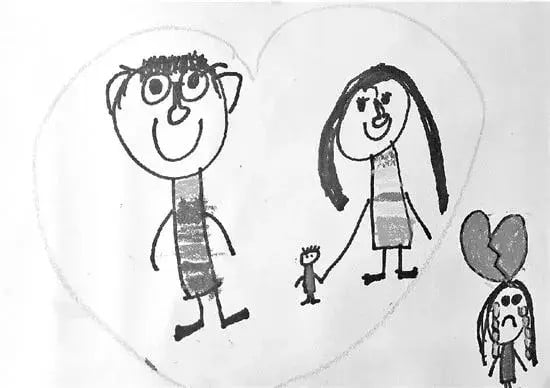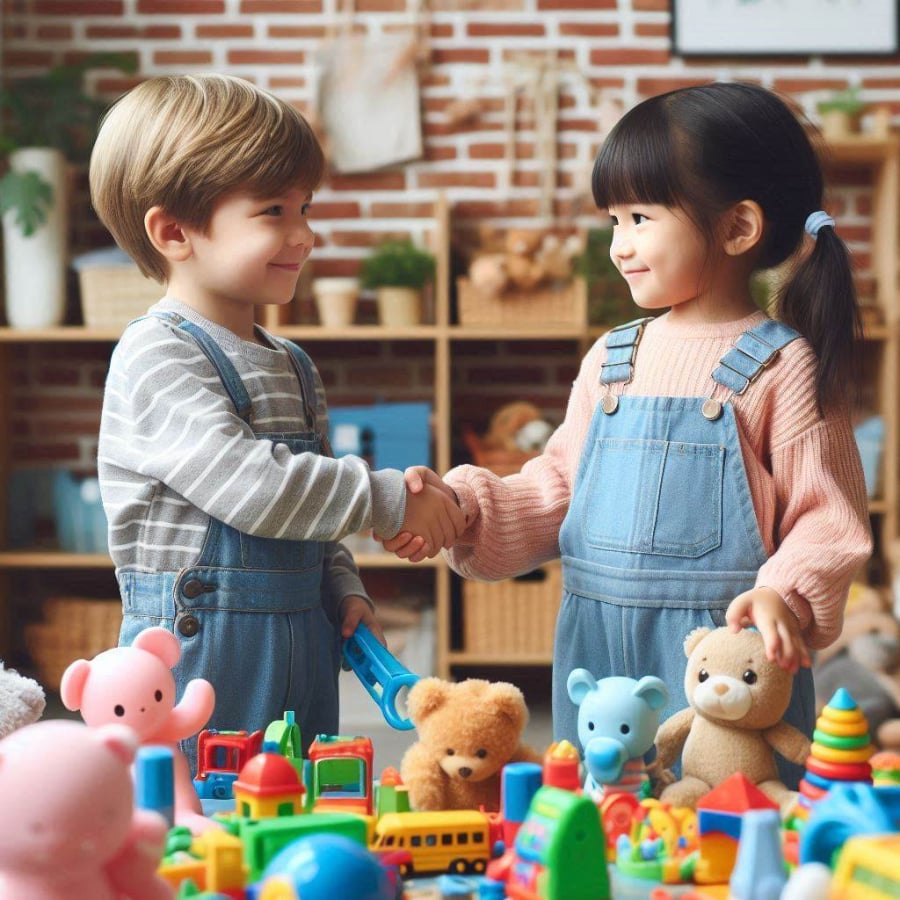Art is an extracurricular activity that many children enjoy as it allows them to unleash their creativity and express their inner world beyond daily communication. Painting about family is a familiar topic that preschoolers have likely experienced at school.
Recently, a teacher in Shenzhen, China, shared an intriguing situation when she assigned her students the topic of drawing their families. However, upon receiving one student’s artwork, she was shocked. While other children in the class depicted happy family scenes, this particular child’s painting revealed a heartbreaking story.
The drawing included the father, mother, and their son, all smiling happily. After sketching the three family members, the preschooler added a large heart to symbolize the love between them. However, the unusual element was in the right corner of the painting. There, the child had drawn a girl with a sad expression, crying, and above her, a broken heart, signifying the loneliness and hurt the girl was enduring.

While other children painted happy family scenes, this child depicted a heartbreaking story.
Upon observing the entire painting, the teacher immediately realized the underlying issue. She contacted the child’s parents to inform them of the situation. The parents were not only surprised but also embarrassed when the teacher explained what their daughter had drawn.
They acknowledged that since the birth of their second child, they had devoted less time to their eldest. Some of their actions had unintentionally made their daughter feel unloved and replaced by her younger sibling. The arrival of the new baby had become a source of threat in her eyes, as she felt her parents’ attention and love were now divided.
Following the conversation with the parents, the preschool teacher offered critical feedback and reminders. She emphasized the need for parents to pay attention to the psychological needs of their older child and maintain a balance of care and affection for both children. This approach helps prevent any unwanted negative impacts on the children.
So, what should parents do in families with two or more children to maintain a harmonious relationship among siblings?
Strive for fairness in treatment
The most important factor for the children is the attitude of their parents, who must strive to treat them as fairly as possible. When conflicts arise between the siblings, parents should not favor the younger child simply because of their age, nor should they demand that the older child always give in. Instead, parents should aim to resolve the issue objectively and ensure fairness for both. Of course, if possible, the best approach is to let the children work out their differences and teach them the value of humility and mutual love.

The parents’ attitude is crucial in fostering a fair and loving environment for their children.
Avoid comparing siblings
Statements like, “Look how well your brother behaves,” or “You should learn from your sister,” are common among parents, but they can easily lead to conflicts between siblings. Over time, these comparisons can create distance and even turn into fierce competition.
As a parent, it’s essential to skillfully uncover each child’s unique qualities and encourage them to respect each other’s individuality.
Provide opportunities for private space
Sustainable relationships are built through companionship and interaction, and this applies to sibling relationships as well. Parents can facilitate private time for their children, allowing them to develop a deeper understanding and harmony with each other. This shared experience can strengthen their bond and help them navigate difficulties together.
Naturally, some minor conflicts may arise during this process. However, unless there are serious concerns, parents should let their children work things out on their own. Guidance can be provided to teach children how to resolve conflicts and coexist peacefully.

Parents can guide their children to resolve conflicts and foster a harmonious relationship.
Encourage older siblings to participate in caring for younger ones
Before deciding to have another child, it’s advisable to inform the older child and prepare them mentally for the arrival of a new family member. This makes them feel like an essential part of the family.
When the new baby is born, parents should not only focus on the younger child’s emotions but also involve the older sibling in caring for the baby. This helps the older child understand their role and responsibilities within the family. Through this process, parents can cultivate the older child’s love for their sibling and minimize any negative emotions that may arise from this significant change.


































